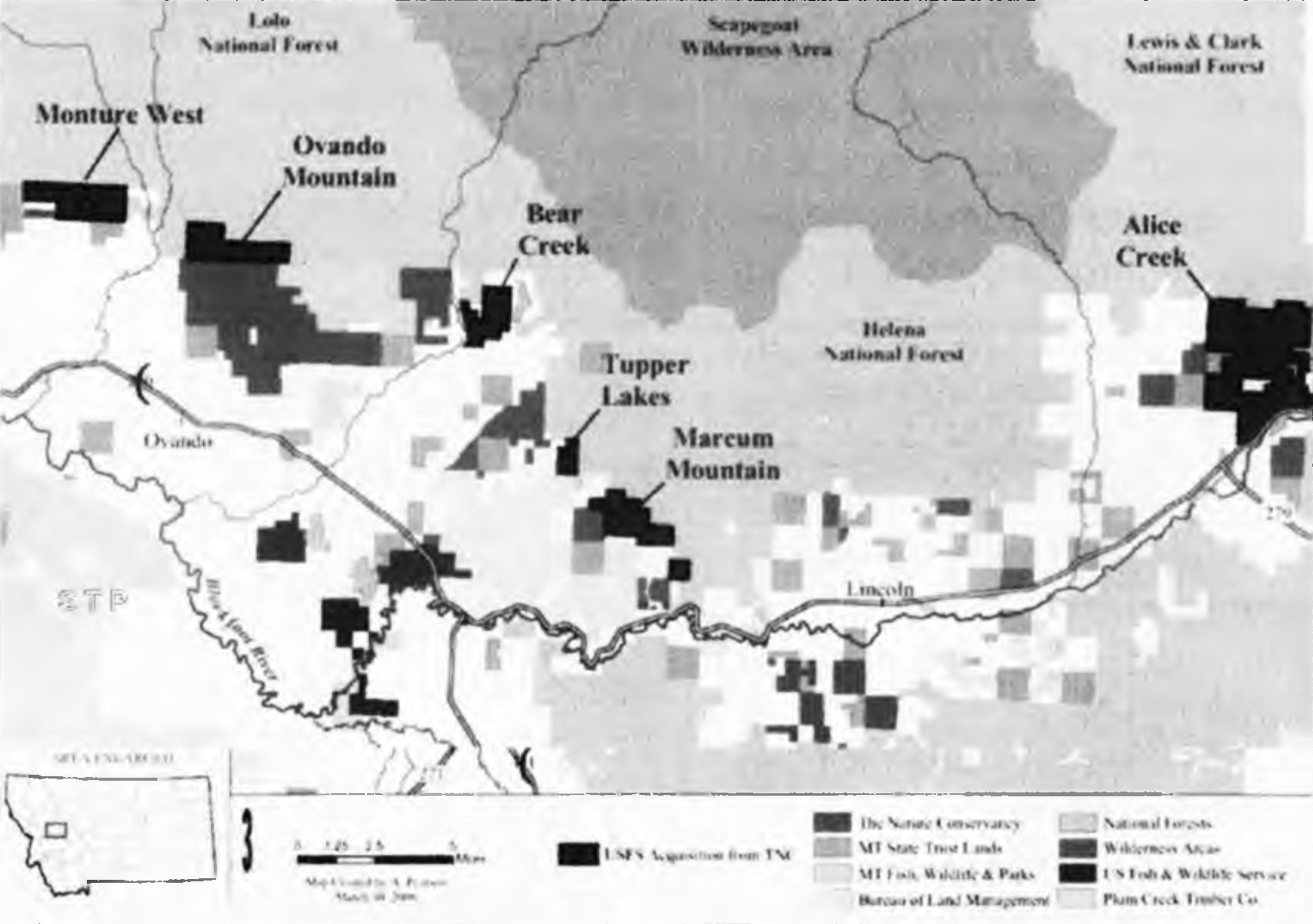Forest Service acquires 11,000 acres in the Blackfoot
Nature Conservancy’s first major re-sale of Plum Creek lands

Helena, Mont. — Almost 11,300 acres bordering national forest lands in the Blackfoot watershed are now in public ownership, protecting important wildlife habitat and providing public access.
The Forest Service purchased the lands this week from The Nature Conservancy, which bought them in 2004 from Plum Creek Timber Company as part of the 88,000-acre Blackfoot Community Project.
“This is great news for the Blackfoot because it puts in public ownership lands that local residents wanted to see continued public access on,” said Hank Goetz, the lands director for the Blackfoot Challenge, the landowner group leading the project.
U.S. Sen. Conrad Bums (R-Mont.), chairman of the Senate Interior Appropriations Sub-Committee, was instrumental last year in securing Land and Water Conservation funding for the $10 million acquisition.
“This was a homegrown idea and is a great example of a public and private partnership and communities coming together to protect important habitat for public access, for recreationists and for hunters,” Bums said. “I thank everyone involved for all of their efforts in making this a reality.”
These lands — six separate parcels in two counties — are all mid-elevation lands important for grizzly bears, Canada lynx, native fish, and other wildlife.
Furthest east in Lewis and Clark County is the 5,000-plus-acre Alice Creek parcel which abuts the Continental Divide.
“This purchase significantly expands public land on the Divide, which is important grizzly recovery habitat. It’s also important for public access for hunting and other recreational activities,” said Amber Kamps, Lincoln District Ranger in the Helena National Forest.
The parcels farther west— Marcum Mountains, Tupper Lakes, Bear Creek, Ovando Mountain and Monture West — also connect to existing national forest land and provide a link to the valley for wildlife coming down from the Scapegoat/Bob Marshall Wilderness complex. Most of these parcels are in Powell County.
The Forest Service has long hoped to acquire these parcels, but it was the widespread community support for the Blackfoot Community Project that helped gamer the federal dollars for the purchase, according to Tim Love, Seeley Lake district ranger in the Lolo National Forest.
“The opportunity arose when the Blackfoot Challenge and the Conservancy purchased the Plum Creek lands, and because of the support for keeping these lands public and the desire for public access,” said Love, an agency member of the Blackfoot Challenge.
This represents the major single re-sale of lands the Conservancy purchased as part of the project. The price was determined based on the “rigorous federal appraisal standards of fair market value,” said Caroline Byrd, the Conservancy’s western Montana program director.
The sale is important, said Byrd, because it will help the Conservancy continue its conservation work in the Blackfoot. The Conservancy made a significant financial commitment for the initial land purchase, a risk it took on “because of the leadership of the Blackfoot Challenge and the steadfast community support of the project,” she said.
To date, the Conservancy has acquired 54,106 acres of former Plum Creek lands and is in the process of re-selling them to public buyers and to private buyers with conservation agreements in accordance with the community-developed plan.
The Conservancy and the Challenge continue their public and private fundraising efforts to complete the project. The Kresge Foundation recently provided a big boost to the effort through an $850,000 challenge grant for the purchase of the 5,600-acre Blackfoot Community Conservation Area, a centerpiece of the Blackfoot Community Project.
